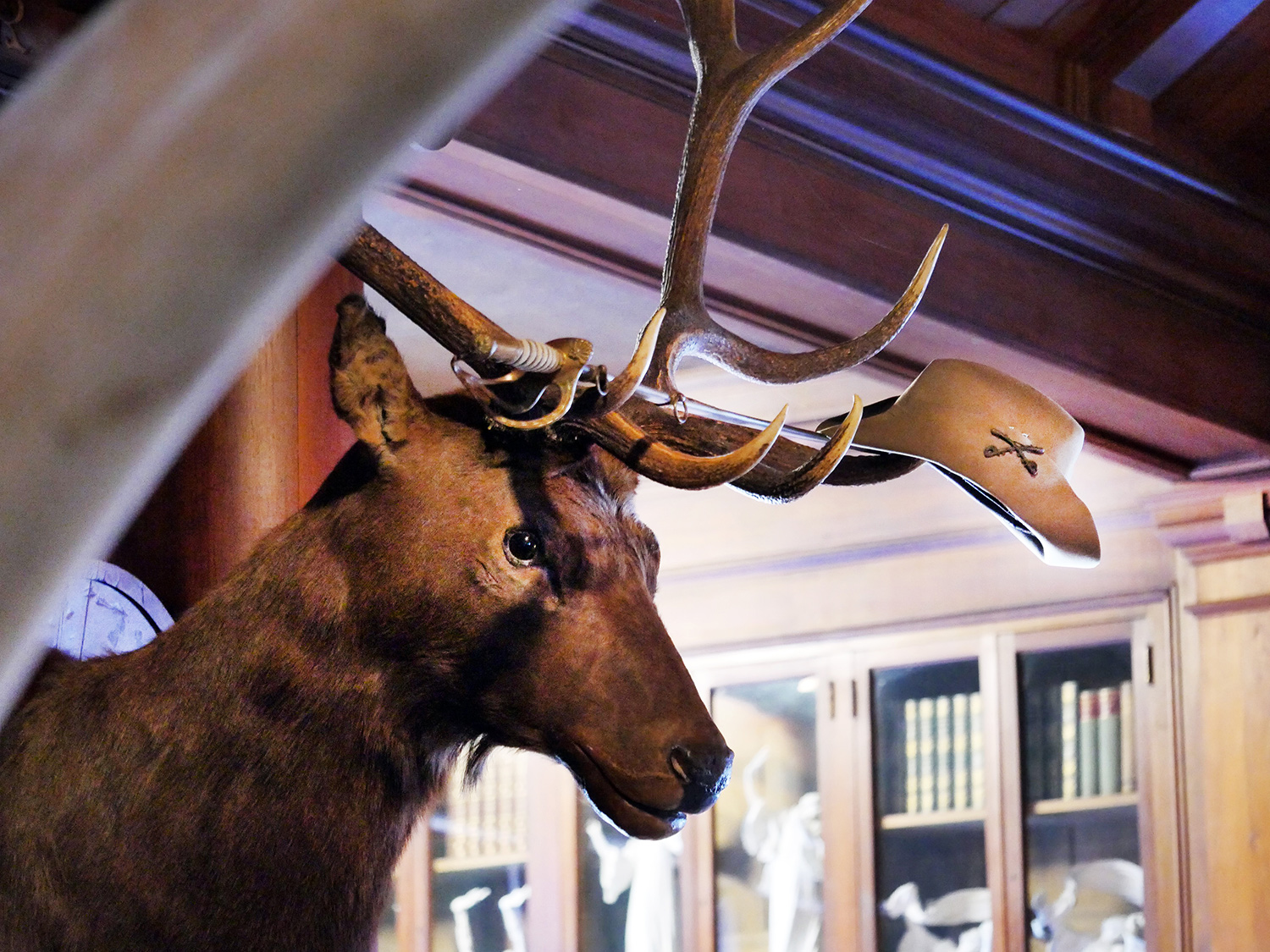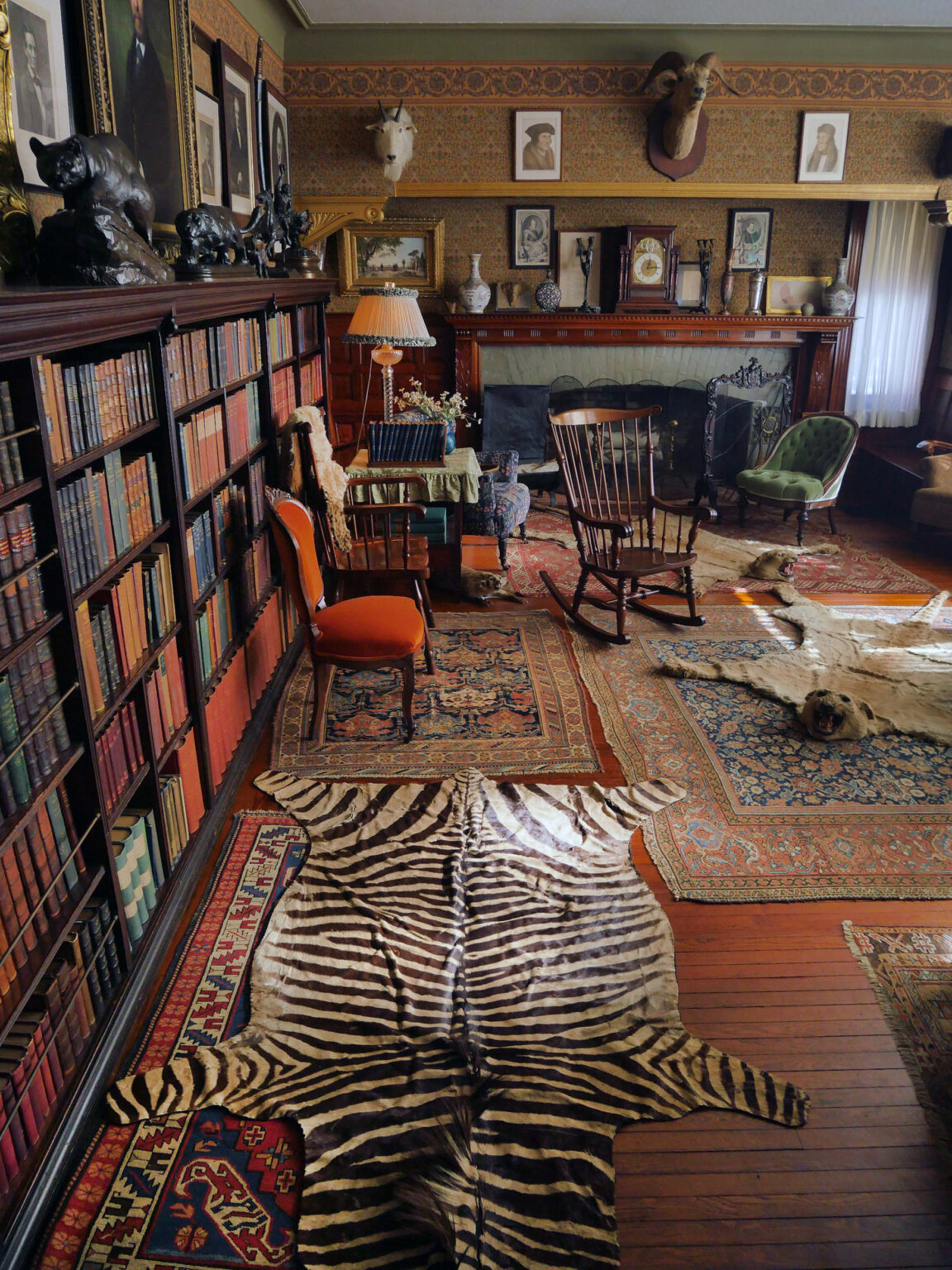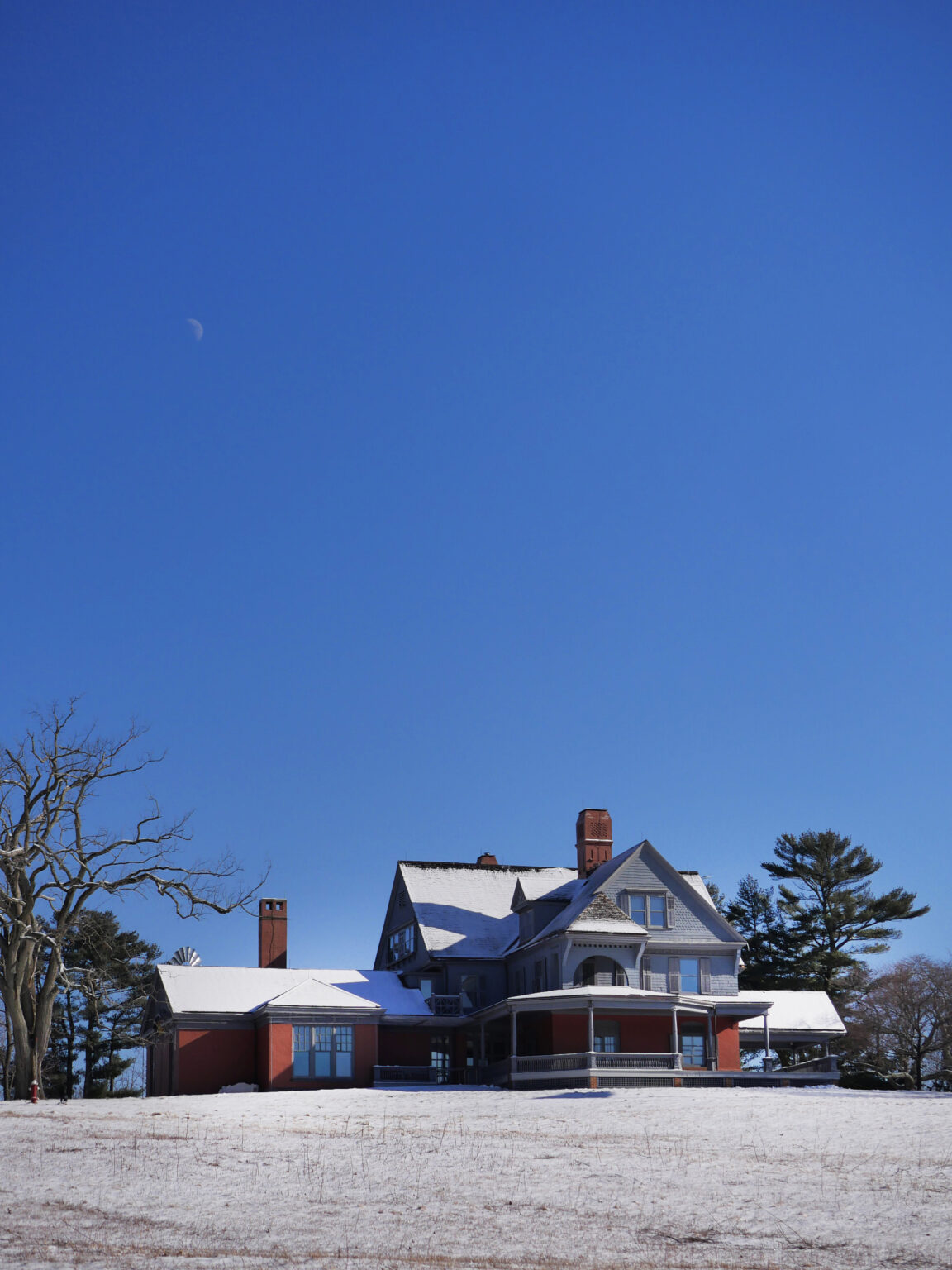Writing and photography by Justin Negard
For this issue, we thought a travel story to someone’s home was appropriate. However, rather than drag you to a glitzy mansion with a multi-car garage, we decided instead to show you a home with history, personality and a little bit of the bizarre. If you are an animal lover, as we are, please read this with an open mind and an understanding that this is a home from a different time.
It can be said that to enter someone’s home is to enter their very mind. Everything from the books on the shelf to the decor in each room speaks volumes about who that person is and what they stand for. For the men and women of history, their living spaces are often some of our only windows into who they were.
Sagamore Hill, home to the 26th president of the United States, Theodore Roosevelt, is located in Oyster Bay, NY—about a one hour drive from northern Westchester. Each room is a trip back in time—a journey into an old world of exploration and adventure that has long since disappeared. It’s an unusual space, to be sure, but nonetheless apropos to the former owner himself.
The man in the arena
Roosevelt was said to be a bombastic individual. He often spoke of the person “in the arena,” who “at best knows in the end the triumph of high achievement, and who at worst, if he fails, at least fails while daring greatly.” Sagamore Hill is a testament to this belief, reflecting someone whose life was rich, exciting and very much in the arena.
The walls of the house are lined with artifacts and trophies, many of the taxidermical variety, serving less as aesthetic choices and more as proof of Roosevelt’s personal triumphs. Roosevelt was a passionate hunter who, according to the Theodore Roosevelt Association, “loved the thrill of tracking and chasing game, the skill in marksmanship, the careful and deliberate recording of his observations about each hunt, the demanding—if smelly—preservation of specimens, and the pleasure of capturing in rich and vibrant language this ephemeral experience so that he could share it with the world.”
After leaving the presidency, Roosevelt went on an 11-month, 2,500-mile African safari. This trip, commissioned as a scientific expedition by the Smithsonian Institution, “involved trapping or shooting over 11,000 animals, including everything from insects to the largest of game—elephants, hippos, and white rhinos,” according to the Association.
But it should be mentioned that Roosevelt did not hunt just for the sake of killing, and he was against the senseless slaughter of animals. In fact, during an unsuccessful bear hunt in Mississippi, his guide, hoping to help Roosevelt claim at least one victory, tracked a bear and tied it to a tree. But Roosevelt refused to shoot the injured bear, and after the political cartoonist Clifford Berryman illustrated the event, toy bears called “Teddy’s Bears” became all the rage.

Inside the home
A zebra skin greets visitors as they enter the first-floor office, along with two lion skins and a ram’s head staring down from above the fireplace, reflecting his African safaris. On the adjacent wall, paintings of Abraham Lincoln, Ulysses S. Grant and his own father are hung. These men are, according to park rangers, Roosevelt’s three most respected influences.
Across the hall, a sitting room displays more animal skins, this time with mountain lions’ mouths gaping open, along with paintings of landscapes, candelabras, floral vases and regal Victorian furniture. The front hall features the head of a water buffalo along with a contraption built from brass tubes and ivory tusks, which, according to the ranger, was an overly embellished dinner bell used to call the family for supper.
Throughout the house, you’ll find gifts from world dignitaries. There are podiums holding ornate vases and sculptures given to Roosevelt by Japanese and Russian dignitaries. Many of these pieces reflect his efforts to broker peace between the two nations, which earned him a Nobel Prize. There’s also a painting depicting the United States Navy fleet, given to him by Kaiser Wilhelm II, the emperor of Germany at the time. And you’ll also find a painting of Native Americans on buffalo skin, given to him by Indian Court of Affairs Chief Justice John Grass, which depicts the Battle of Little Bighorn that Grass fought in.
Towards the back of the house is the North Room, which is the largest space in the home. Built as an extension, this great room served as the main space for parties and company, and for this reason, it includes a vast array of decor from Roosevelt’s travels around the world.
Near the room’s entrance are elephant tusks that an African king gave Roosevelt as gifts. There’s Samurai armor from the emperor of Japan on a table. The walls are lined with swords, spears, paintings and, yes, more animal heads and skins, each reflecting a gift or one of Roosevelt’s expeditions. And then there’s a wide-brimmed hat, which hangs discreetly from a buck’s antler. It’s the very hat that Roosevelt wore as he stormed to the top of San Juan Hill as Colonel in the Spanish American War. Roosevelt tossed it onto the antler himself, and that’s where the rangers left it.

A historical space
Not only did Sagamore Hill reflect the historical accomplishments of Roosevelt, but it was a part of history as well. Roosevelt held numerous events, large and small, in this home, which he visited frequently during his presidency. (The nearby train station in Oyster Bay is now a museum dedicated to Roosevelt’s many trips.) The press at that time referred to Sagamore Hill as the “Summer White House,” and it served as a meeting point for world leaders, politicians and noteworthy people of the day.
Roosevelt gave speeches to the press right from the now iconic front porch of the home, with Sagamore Hill’s recognizable pinstripe awnings and teal exterior behind him. He would take dignitaries on long hikes around the property, which stretches across many acres to the Long Island Sound. Roosevelt loved nature, and he and his family enjoyed the large swaths of forests and wetlands around the property.
There are many noteable rooms inside the house, including one in particular that Eleanor Roosevelt, his niece, spent a lot of time in. However, the most famous room of all is the Flat Room, which is where Roosevelt died from a pulmonary embolism at the age of sixty.
Books and other passions
Roosevelt was an avid reader, and it’s been said that he read a book per day. Each and every room features multiple shelves of books in a variety of subjects and languages. (Roosevelt spoke English, German and French; he could read Italian.) In some cases, the books are included as part of the decor. In other spots, shelves were installed in unusual places, such as the door frame of a bedroom. His books are still in place today throughout the house, and they display his wide range of interests that range from world history to poetry.
As a student of zoology (and ornithology in particular), there are also a variety of animal and bird specimens, which Roosevelt caught and studied, on display in the house and at the nearby museum located on the property. He became interested in the subject as a child, and, throughout his life, he donated a great deal of his specimens to the Natural History Museum in New York City, which his father helped establish.
Most importantly, Sagamore Hill reflects the large and energetic family that once lived there. Roosevelt and his wife had five children (plus one daughter from his previous wife, who passed away during childbirth). Many rooms are still decorated for the children. College pennants and school books are arranged in one room, while a nearby nursery holds a crib and a turn-of-the-century tricycle. And of course, the rooms also contain leopard and tiger skins across the floors, mixed in with the children’s toys.

Frozen in time
The National Park Service goes to great lengths to maintain the spirit of Sagamore Hill. Roosevelt’s passions and personality are on full display, thanks to the well-maintained souvenirs from his many explorations and accomplishments. Visiting his home allows you to step back into a world that was not entirely explored, where romanticism thrived and adventure could be found. That feeling alone is worth the trip.
Sagamore Hill
20 Sagamore Hill Road
Oyster Bay, NY 11771
(516) 922-4788

This article was published in the March/April 2024 print edition of Connect to Northern Westchester.

Justin is an award-winning designer and photographer. He was the owner and creative director at Future Boy Design, producing work for clients such as National Parks Service, Vintage Cinemas, The Tarrytown Music Hall, and others. His work has appeared in Bloomberg TV, South by Southwest (SXSW), Edible Magazine, Westchester Magazine, Refinery 29, the Art Directors Club, AIGA and more.
Justin is a two-time winner of the International Design Awards, American Photography and Latin America Fotografia. Vice News has called Justin Negard as “one of the best artists working today.”
He is the author of two books, On Design, which discusses principles and the business of design, and Bogotà which is a photographic journey through the Colombian capital.
Additionally, Justin has served as Creative Director at CityMouse Inc., an NYC-based design firm which provides accessible design for people with disabilities, and has been awarded by the City of New York, MIT Media Lab and South By Southwest.
He lives in Katonah with his wonderfully patient wife, son and daughter.










